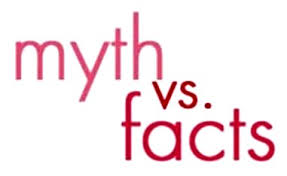
For years know life settlements have been a go-to method for people who want to get rid of their life insurance policies in exchange for money. While in most cases the process of selling a life insurance policy is virtually effortless, some still think that the idea of life settlements is just too good to be true. Along with this notion, several others myths regarding life settlements have risen to the surface since its beginning in the late 1990s. Listed below are a few of the more common myths that are often associated with the life settlement industry.
1. Life Settlements Aren’t Legal. When the concept of life settlements was introduced over 12 years ago, its legality was questioned. While some states have no laws regarding the selling of life insurance policies, others do have laws that regulate the process. The extent of these laws require that policy holders go through a licensed life settlement broker for the sale of their life insurance policy. Most life settlement firms have rules and regulations put in place to protect both the sellers of the policies as well as the investors. Although life settlements are 100% legal, there are certain criteria that has to be met before life insurance policies are qualified for selling purposes. For example generally the policy holders have to be 65 years of have, have a policy valued at $100,000 or more, and the policy must have been in place for at least 2 years. Click here for a full list of criteria.
2. Life Settlements Are Made to Benefit the Investors Only. Contrary to popular belief, life settlements are beneficial to all parties involved. Individuals who sell their life insurance policy often choose to do so for various reasons. Some no longer wish to make the premium payments, others are strapped for cash and need financial relief, and some are at risk for having their policy lapse which would result in a loss of both the policy and benefits. Either way for most policy holders, life settlements are a life saver. The money received from the sell depends on a number of things including the value of the policy, the age and health of the insured individual, and the amount of the premium.
3. There are Restrictions Put on the Money Gained from the Settlement. This is one of the most common misconceptions associated with the life settlement process. After receiving the pay-out, individuals are free to use the proceeds in whatever way they choose. There is no restriction on the use of the money, nor is the way you use the money documented in any way. Often times people use the proceeds of their settlement to pay off debt, give to charity, or add to a retirement fund.
Life settlements are a great way to escape from the financial burden of high premium payments and/or debt of any kind. Unlike other resources geared towards immediate financial relief, the selling of life insurance policies is most often easy and stress-free. For more information on the life settlement process or to get started today, call us at 877-303-9777.

